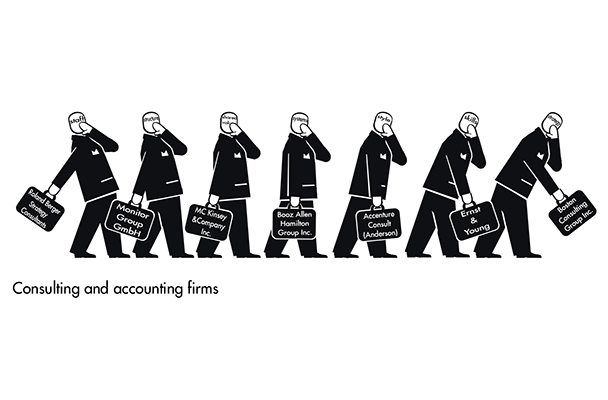Andreas Siekmann’s work revolves around the representation and visualization of the ever-abstract realms of economics, capital, and politics. How can politics and economics become visible, and under which conditions? Essential to his work is the analysis of the transformations and mutations of capitalism, the worldwide introduction of neoliberalism, and the impact it has had on society, democracy, urban space, and environments. He meticulously researches the restructuring of labor conditions under so-called globalization and the systematic erosion of social structures. He interrogates the present conditions of capitalist exploitation, neoliberal propaganda, and the forms of political camouflage they yield today.
Siekmann’s projects are long-term investigations, which materialize in the form of graphic representations, drawings, sculptures, installations, films, and architectural models. His sculptural and installation work have focused on the privatization and commercialization of urban space, on the “event”-city, and city marketing in the wider sense. His investigation for the Taipei Biennial 2012 focuses on the close relationship between artistic work, “creativity” as a marketing slogan, urban image-campaigns, and so-called regeneration policies. The backdrop of this work is the increasingly global methods of the financial industries to make city governments dependent as debtors, thereby systematically undermining politics and public control.
His graphic representations take the form of visual narratives in which complex processes are represented by symbols. His visual language encompasses manifold historical references, including, for instance, Otto Neurath’s pictorial pedagogy of the 1930s. He thus translates and transfers earlier attempts that sought to root particular techniques and artistic methods within socio-political contexts into the present, evoking both continuities and discontinuities in the history of capital.
His graphic representations—maps or diagrams—allow us to closely follow complex and networked processes of production and capital flows, and at the same time represent statistical information and foster a “pedagogical,” comparative approach to “data.” Through them we can permanently switch between the particular and the general, the concrete and the abstract, the “mere figure” and the realities and lives that are in-formed or enslaved by it.
Andreas Siekmann, born 1961 in Germany, lives and works in Berlin

